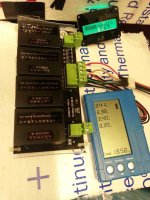Tomasenskede
1 µW
- Joined
- Oct 7, 2018
- Messages
- 4
Today I have 3 lead batteries (355 Ah) in my boat. I have a plan to replace them with a lithium battery bank based on 18650 cells…
I have three charges.
Questions;
Thanks,
Tomas
I have three charges.
- Diesel generator of 115A 14.4V (Volvo Penta)
- Solar charger 10A with adjustable voltage (Victron SmartSolar)
- shore power 45A charger with "adjustable" voltage (Quick SBC 501FR)
Questions;
- 3S or 4S…. 3S = 9V – 12.6V, 4S = 12V – 16.8V
- Bank setup? 10 packs of 3x5 or 4x5 with BMS in parallel or any other design?
- DC-DC to get correct voltage? Or not?
Thanks,
Tomas


